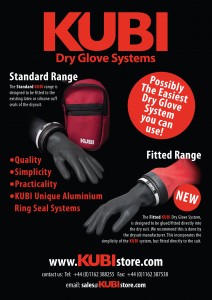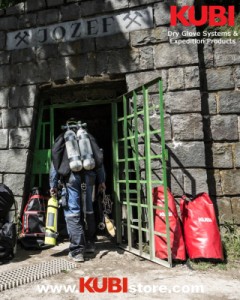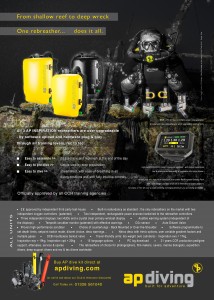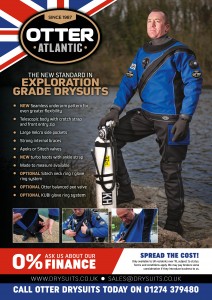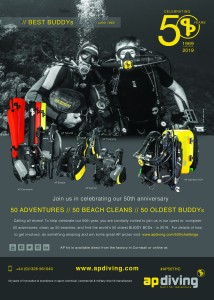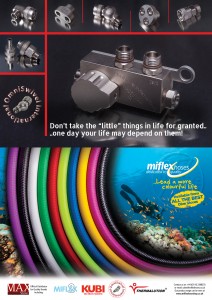DICTIONARY OF EGYPTIAN SHIPWRECKS K
DICTIONARY OF EGYPTIAN SHIPWRECKS- K
FURTHER DETAILS CAN BE DOWNLOADED FROM
Www.KUBIstore.com & www.Miflexhoseshop.co.uk
M.V KAREN VATIS
A Greek bulk carrier motor vessel, built in 1973 by the Geogi Dimitrov Shiyard, Varna.22114 tons, 210mtrs long, 28 mtrs beam, 15.6 mtrs draught. Owned by Vages Compania Maritima. Hulland machinery valued at £4.2m
FINAL VOYAGE
Her final voyage was from Liverpool to Kandla, north west India.She passed through the Suez canal on the 14th November 1985. Two days later she began to take on water into her double bottom tanks, and then her engine room, while near MARSAZEBARA, RAS EGELA, south of Safaga. The 27 crew were recued buy Egyptian naval vessels after putting into the lifeboats, and landed at Port Berenice.
S.S.KEPHALLINIA
The Kephallinia was a British Schooner which was originally built as City of Belfast Laird (Yard No. 590) at Birkenhead for J. Little & Co., Barrow. Launched in April 1893 and completed 01 July of that smae year. She was 1055 or 1267 Grt., 85.5 meters in length, and 9.8 meters in beam, with twin screws and a cruising speed of 17 knots. Requisitioned for use during WWII (RVRN Kephallinia). Foundered and sank off of Alexandria 13 August 1941 while carrying supplies to Tobruk. The HMS Hero assisted her.
WRECK OF THE S.S. KINSTON(aka Sara H)
Built on the River Wear, in the Oswald yard at Sunderland for the Commercial S.S. Co. in 1871. She was 262 ft long and grossed 1449 tons and was described as a brigantine rigged iron hull screw steam ship. Like the Carnatic and Ulysses she was a hybrid-rigged for sail and powered by steam. Due to low working pressure of boilers and un- efficient engines, sail was essential to extend the working range of vessels of this type. Not until high pressure boilers and triple expansion engines came along did sail give way to steam power.
THE FINAL VOYAGE
The Kingston left Cardiff on the 28th January 1881 bound for Aden with a crew of 25.She had onboard a cargo of 1210 tons of coal, plus 530 tons in her bunkers. On the 16th feb, at 8.15 in the morning she passed through Suez. By 6pm she was abreast Ras Gharib, and by 10.50pm(2250) she was nearing the Ashrafi lighthouse. The weather was fine but cloudy, and the sea smooth. The Kingston was making full speed, a steady 9 knots. At this point the Master, Thomas Richard Cousins altered course “a quarter point to the southward”, to counteract the force of the tide termed “pulling”. At 1145 he ordered the second mate to go and set the fore topsail. The lookout was called from his post to assist in hauling the sheet home. As the two men went aft to trim the yards the ship struck at 1150 pm. An anchor was put out astern and for the next two hours she was put full astern, but held fast. The order was given to jettison her cargo. The steamship F.W.WARD came along side, declining to assist in pulling the Kingston off, but offering passage for her crew.
By the 18th the had jettisoned some 70 tons of coal and another steamship the COLUMBIAN came alongside, offering her services which were accepted and a hawser attached aft. The Kingston held fast and the COLUMBIAN left. The Kingston began to make water and that evening and by the 19th the master had ordered the crew to abandon ship. The mate and 16 of the crew gaining safe passage on the ALMORA. The rest of the crew, including the master, chief engineer, second mate and 5 crewmen remained on board until the fires went out about 6pm on the 20th.They made it safely to Gobul island until the 24th, when running out of water they put out and were taken aboard the STRATHMORE and landed at Suez. The Kingston went to pieces where she struck.
The PRACTICAL JOKE
In the early nineties this wreck was labelled “unknown”, then a guide book appeared quoting it as the SARA H. I could find no evidence to support this, but as it was written in a book the diving world labelled the wreck SARA H .At a dive show in 1996 my display still showed the wreck as unknown. A young lady approached , smiled and said “well at least you weren’t fooled by Davids practical joke”. My reply was there was no such vessel as the SARA H “, she replied “that’s right-I AM SARA H”.She went on the explain that the author had very little knowledge about what he was writing and had picked the captains brains-DAVID HALAL, Sara’s husband !
David had no idea what this wreck was called and looked at his wife and was inspired! Little did he know how long this joke would last.
IDENTIFYING THE WRECK
Spurred on by Sara’s story I returned to the wreck and took photos of her unusual engine /boiler configuration, and took them to the resident expert at the Trinity Museum on Newcastles’ quayside. He instantly identified the engine-explaining that it was a hybrid and only 10 had been made –“here on the TYNE”. He then went on to produce a yard list-10 names of ships the engines were fitted into. Through a process of elimination and a listing in DODAS I identified the wreck as the S.S. KINGSTON. It took years for all those “experts” out there to accept I was right……..
Bitter pill for some to swallow!
THE WRECK TODAY
All that remains of the vessel today is a hull- and at first glance the wreck looks worthy of only a quick swim over, an afterthought after diving the nearby Thistlegorm. However those properly briefed will find a wreck full of colour, life and interest. It is easy to see how she came to grief –head on into the reef, indeed her fore section merges with the reef itself, with her rudderpost resting in 14 mtrs of water upright. The rudder and prop have been a backdrop for many a photograph. All of her wood has long since dissolved, leaving her uprights and cross bracings open- and easy to explore. Her boilers and condensers sit just below the surface and her engine lies over to the starboard side of the ship.
Decent down to 16 mtrs off the stern, taking in the towering hull above. Looking right the crows nest lies in 14 mtrs –a great photo prop. Turn back towards the hull, passed the fan corals and through the rudder post-watch out for many nudibranchs and invertebrates on the hull. Turn right. You should now be swimming with the hull on your right-up to 8 mtrs where there is a break in the hull-look left for shoals of fish. Swim in through the break in the hull- you are now in the heart of the ship above are cross beams a winch and a spare prop. Meander carefully through the uprights-glassy hatchets full what was once the engine room . Map of Africa Angels sweep by in curiosity. As the stern approaches look for the steering helm. Glide over the starboard side along the gunwhales watching out for attacking surgeon fish! The engine lies spilled out below., boilers to the left. Several uprights come into view-almost temple like. At 6 mtrs swim away from the wreck along the reef, now on your left more shoaling fish lie ahead.
The surrounding reef is perhaps one of the very best in the area-huge shoals of yellow stripped goatfish, sweetlips, antheas and fusiliers hang over some beautiful hard and soft corals-Tuna turtles and dolphins are regular visitors. Care is needed with resident surgeon fish they are very brave, aggressive and territorial-especially around the stern.
Although this an ideal third dive it can be superb early morning dive and between 11am-3pm the light and colours can be quite stunning. When the conditions are right it is a photographers paradise. However it must be noted that with a swell running the site can be quite tricky. The current can be very strong and often splits directly over the reef-which of course then lends to a great drift along the reef(on your left) until the current meets a counter current coming the other way. When this occurs divers often end up in an eddy-a good collecting point for the rib
M.V. KIMON M Built in 1952 by Stuicken & Sons as the BRUNSBUTTEL. She was105.meters long, powered
by an 8 cylinder diesel engine built by Waggon & Masch . She was 3714 ton gross. In 1964
she was renamed CIUDAD DE CUCUTA until 1971 when she was again renamed the ANGELA.
In 1975 under the ownership of Janissios Shipping company of Panama she took on her final name.
THE FINAL VOYAGE. In December 1978, the Kimon M loaded 4,500 tons Lentils left the Turkish port of Iskenderun. On the 12th, she drove headlong with engines at Full Speed onto the reef. A passing cargo ship – the “Interasja,” immediately responded to the distress call and picked up all the crew and delivered them safely to Suez two days later. With the bow section high and dry on the reef the main section of the ship broke off and rolled over onto its starboard side,
THE WRECK TODAY. The resulting impact of the grounding can still be seen today. A huge crater of barren scree surrounds her shattered fo’c’sle, her bows high and dry and well dispersed. The aft section, lies in 27mtrs, with weather deck, companionways, huge prop and rudder is almost intact, though recent storms have made large sections forward of this very unstable.
The entire wreck lies on her starboard side, with her stern in 27 mtrs of water, to within a few mtrs of the surface at the fore section. Her upper hull has been weakened by a salvage attempt and the impact of another vessel, and although much of the engine room still remains, recent storms have rendered it in- accessible-even in calm weather. From the aft holds forward the wreck is in a dangerous condition and should be viewed from the outside only, The resident school of batfish are perhaps one of the few highlights of this once great wreck, which has succumbed to the relentless wave action and swell at this exposed corner of the reef.
The debris on the reef can be explored before returning to a horizontal mast and the mooring line. The wreck is sometimes added on at the end of a dive on the tile wreck (7 minutes away)The hull is very shallow (10m) and again leads down to the stern which is perhaps the most interesting and intact area of the dive. The rudder and prop should be visited first-they are huge-then swim up a few meters and explore the weather deck- the direction helm is still there-and the companionways. Forward of this the vast holds have now collapsed in right up to the engine room area, which is now also in a state of collapse. The entire area is a confused mess of jumbled pipes plates girders and fittings, giving way to the forward hold another void
It should be noted that entering the wreck is very dangerous. However, the size of the wreck and the way in which it has disintegrated into the reef is worth seeing if time allows and the weather is good. Best tagged on to the end of a dive on the Marcus.
H.M.S. KIPLING
A K class British destroyer, built at Scottstown by Yarrow Shipbuilders ltd, launched in 1939. She was 1690 tons, 348 ft long with a 35 ft beam. Her tubines delivered 40,000 shp making 36 knots. Her armament consisted of six 4.7 inch guns, 6 smaller and ten torpedo tubes.
Under the captaincy of Cdr St Ford d.s.o, she was involved in the assault on Cherburg harbour in October 140 along with HMS KASHMIR, JAGUAR and BROKE, and the battleship HMS REVENGE. On 28 December, 1941 she sank the German submarine U-75 was sunk near Mersa Matruh, in position 31.50N, 26.40E, by depth charges under the command of Sir A. St Clair-Ford, RNOn May 11 1942 while patrolling of the Egyptian coast, with JERVIS, LIVELY and JACKAL she was attacked and sunk by Junkers Ju 88 bombers, severely damaged she sank of Marsa Matruth, with the loss of 2 officers and 23 ratings
S.S.KIRKLAND
The Kirkland was a 1,361 Grt. steam cargo ship/freighter built by Caledon Shipbuilding & Engineering Co., Ltd., Dundee for James Currie & Co., Leith (Leith, Hull & Hamburg S.P. Co., Ltd.). Launched 09 August 1934 and completed the following month. The ship had a length of 79.7 meters and beam of 12.3 meters, with a single screw and a cruising speed of 10 knots.
On 22 April 1942, on the Tobruk-Alexandria route in Convoy TA-36 while either in ballast or carrying a load of ammunition, the Kirkland (Master James Stuart Brown) was hit at 0255 by a spread of 2 torpedoes fired from German submarine U-565 (Wilhelm Franken) 35 miles east-northeast of Sidi Barrani. A hit was observed on the stern by the submarine, developed a list, and stopped at 0301. A second spread of two torpedoes was fired by the submarine and a second explosion was heard by the submarine after 4 minutes and 15 seconds, followed by a heavier explosion. Franken reported two ships sunk but only the Kirkland was hit and sunk at position 31.52N/26.37E. The Master, 15 crew members, and six gunners were rescued by the British Armed Trawler HMS Falk (Lt. H. S. Upperton) and delivered to Mersa Matruh. 1 life lost. Gaza:
KORMORON ORIGINAL NAME ON THE HULL OF THE M V ZINGARA
M.V. KOS IX:
The KOS IX was a Norwegian whaler of 248 Grt of Hvalfangerselskap Kosmos A/S (Anders Jahre, managers), Sandefjord, Norway which was built at Smith’s Dock Co, Ltd., South Bank-on-Tees, U.K. (Yard No. 932) and was launched 11 July 1930. The ship was 116-feet in length, 24-feet 2-inches in beam, and 12-feet 8-inches in draught. Propulsion was provided by a single oil-fired boiler with a triple-expansion engine with cylinders of 14-, 23-, and 39-inches, with a stroke of 24-inches, which generated 75 NHP.
The “KOS VII”, sister ship of the “KOS IX”
Altogether there were 23 ships built bearing the name “KOS“, all of which were built in England. Upon completion of the KOS IX, the ship joined the growing fleet of whalers of Hvalfangerselskap Kosmos A/S. In 2929, the company had launched the Kosmos, a ship which was a major innovation in the whaling industry because she was considered by many to be the largest whale processing ship afloat at the time. On 11 October 1930, the KOS VIII and KOS IX joined the fleet of seven other whale catchers in the Antarctic during the Kosmos’ second whaling season. The KOS IX would also join the whaling expeditions in 1934-35, 1936-37, and 1939-40.
During the 1936-37 expedition, the KOS IX was delivering a freshly caught whale to the KOSMOS in rough seas. While attempting to moor alongside the larger ship, the KOS IX struck the Kosmos due to the rough seas which resulted in the loss of the ship’s propeller. One of the other whale catchers with the fleet then towed the KOS IX to Walvis Bay, South Africa for repairs which last for 12 and a half days.
March 21, 1940 finds the ship in Walvis Bay, South Africa, just prior to Germany’s invasion of Norway on 9 April. In November 1940, the fleet was requisitioned by the British Admiralty along with other ships of the “KOS” fleet, the KOS IX being one of them, for use as an armed minesweeper. The KOS IX departs Walvis Bay on 12 November and arrives in the River Clyde in early February 1941. Anchored in the River Clyde from 4-7 February until being moved to a South Shields shipyard on the 9th where she received a refit, was modified for minesweeping duties, and was defensively armed. On 16 June the ship is transferred to Invergordon, Scotland until returning to the River Clyde on 05 July 1941. The ship was renamed HMS Firmament (FY 1725 sometime during this period, after which the ship is placed in war service.
The next that we here of the ship concerns her loss. The ship, under the command of T/Skipper J. Muttit (RNR), was lost due to stranding off Alexandria on 30 May 1944 and it was deemed as being impractical to salvage her.
